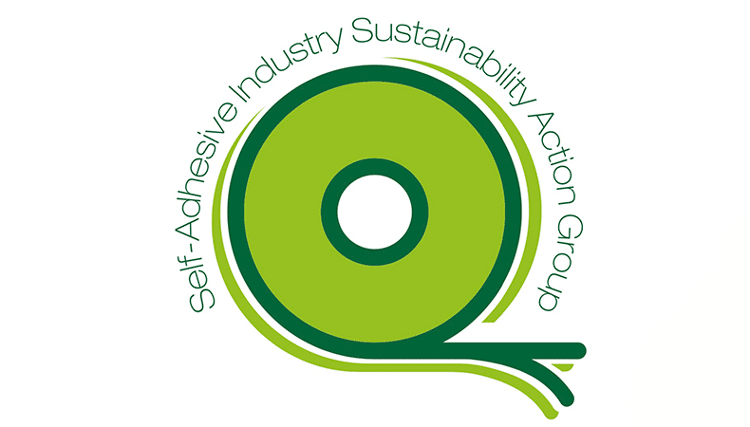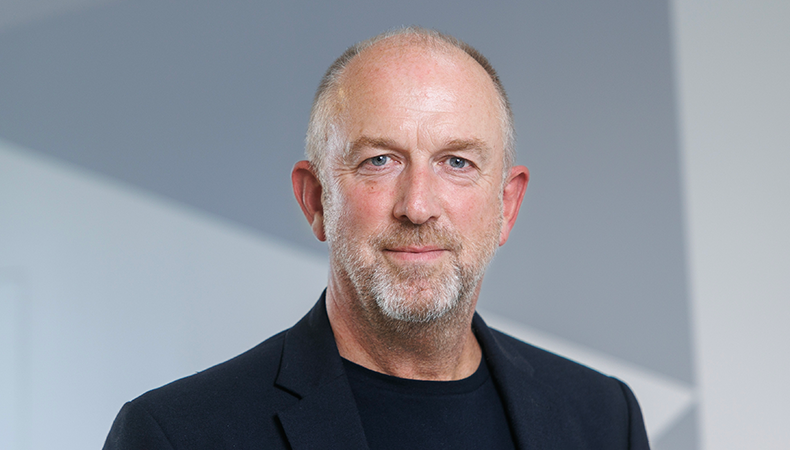A sustainable future for self-adhesives

We speak to SAISAG founder Steve Lister about why he is so pleased that FESPA is ensuring self-adhesive sustainability.
Last year, Steve set up the Self-Adhesive Industry Sustainability Action Group (SAISAG), as detailed in this Club FESPA report. With an impressive line-up of founding members – including companies such as 3M, William Smith, Metamark and Avery Dennison – SAISAG set out with the expressed goal of leading “the self-adhesive films industry towards a sustainable future by minimising our environmental impact”. But SAISAG is now no more – at least, not in name.
“We started SAISAG for a very particular reason. It had never been done before – we had never had this number of competitors in a room to discuss anything – but we set out with the goal of sustainability,” Steve says.
“To succeed in anything to do with sustainability, you need to collaborate – no one can do it on their own. What we found was there were pockets of work being done within some of our founder members – 3M was looking at something, Metamark had set up its recycling scheme, and Avery Dennison was doing something else.
“All these organisations were looking to take this journey towards better sustainability. But they all came across something that was difficult, and the difficulty was recycling the face film and secondly, the liners.”
Sharing is caring
In its earliest days, SAISAG saw significant developments. Naturally, there was some reluctance to contribute to certain areas, with a fear that businesses could be giving too much away, but members soon relaxed into the idea of working alongside their competitors and very quickly understood that they would have to share some information.
“There were some massive positives but what we realised pretty quickly was that lots of people had different approaches. For example, Metamark had its own scheme already, so they knew how difficult it was to collect face film, back haul it, and so on. We decided to start looking at trials of collecting face film,” Steve says.
 Steve Lister
Steve Lister
At this point, SAISAG began to work with John Hutton from Reconomy, who had also started working with FESPA on its new waste training programme.
“Some SAISAG members decided to go on that course, and they became more interested in FESPA. Then FESPA suddenly announced that it would be doing a waste management programme with John. At that point four members of SAISAG moved over to FESPA’s scheme. Then, when John joined FESPA full-time as FESPA’s waste management manager – running the training and recycling programme – most of SAISAG’s members moved over to FESPA.”
But Steve is very happy to see this original SAISAG group of members move to a different organisation.
“The original idea for SAISAG was to bring organisations together and to create a recycling scheme for the materials. We achieved that; the only thing was that SAISAG effectively changed itself into the FESPA waste management programme. But it wasn’t acrimonious because we had achieved our original goal, albeit with a different organisation,” Steve says.
“I see the involvement of FESPA as a huge positive – FESPA is a big name, and John Hutton is a big name in the industry, and together they can make things happen. So, to my mind, it was very harmonious and a nice way to pass forward our work. We achieved exactly what we wanted to achieve – we came together as a disparate group of competitors under the umbrella of the Sustainability Action Group with one goal in mind: which was to create a more sustainable future for the self-adhesive industry.”
Exciting times
Steve himself has plenty of other work on sustainability to carry on with. In addition to consultation work, he is also writing on sustainability for FESPA, as well as running sustainability courses for Make It Happen and working with POPAI UK and Ireland.
With such a close connection to industry, he says it’s an exciting time to be in sustainability.
“We have new stakeholders involved – CEOs, sustainability directors, procurement leads, even logistics people – asking us new questions and bigger questions. People are now asking about the sustainability impact of materials. People are starting to realise that certain materials they used in the past have high carbon footprints, so they have started to challenge those materials, and they’re waking up to greenwashing and claims and information that isn’t true,” Steve says.
“For supply chain partners, if you look at sign and display companies, there are three big trends:
- Sustainable design – designing with end of life in mind in terms recycle, refurbish or reuse
- A big focus on CO2 with people starting to carbon footprint their businesses
- Big brands and retailers mandating measures.
“But what’s really interesting is the future of materials, and the three big trends we’re seeing there. The first is ‘plastic-free’ with durable fibre or pulp-based materials that can mimic plastics. The second is ‘tree-free’ with boards and display-boards made from things like grass, wheat, coconut husks and agriculture waste. And the third is ‘waste-free’ including 100% recycled materials and materials designed with circularity in mind, such as Smile Plastics, which are made from waste materials like yoghurt pots and packaging waste.”
And that, Steve says, leads back into the work that FESPA can do post-SAISAG.
“FESPA can look at where they can take the valuable fibre from the liners for recycling, and I believe they are finding partners who can make new products out of face films. It’s an exciting time to be in recycling, it’s an exciting time to be focusing on end-of-life, and FESPA’s recycling scheme will be able to answer some of those questions for the self-adhesive industry and its suppliers.
“Sustainability is a journey, not a destination. We’re never going to get to the point where we have achieved everything because things are constantly changing. At the moment, that change is happening probably quicker than ever before. So having a group of these fantastic brands working together with FESPA will only make it easier to solve some of the biggest challenges, both today and in the future.”
Become a FESPA member to continue reading
To read more and access exclusive content on the Club FESPA portal, please contact your Local Association. If you are not a current member, please enquire here. If there is no FESPA Association in your country, you can join FESPA Direct. Once you become a FESPA member, you can gain access to the Club FESPA Portal.
Topics
Recent news

Regulation guidance: Corporate Sustainability Reporting Directive
The Corporate Sustainability Reporting Directive (CSRD) is now in effect, but with further changes on the horizon, what does it mean for printers? Sustainability consultant Rachel England outlines everything you need to know and talks to Apigraf about how your business may be affected.

Web-to-print design: Canva versus Kittl
We look at popular design packages Canva and Kittl to determine how they compare regarding graphic design and print on demand.

FESPA in South Africa: the print skills to thrive
Printing SA’s Career Day inspired young Cape Town learners to explore printing and packaging careers.

The rise of Chinese printers
Chinese printing companies are on the rise, and have their eyes set on the UK and EU marketplace. Some have made an instant impact; others are running into issues with maintenance and language barriers. What does the future hold for Chinese printing firms, and how can you navigate working with them?